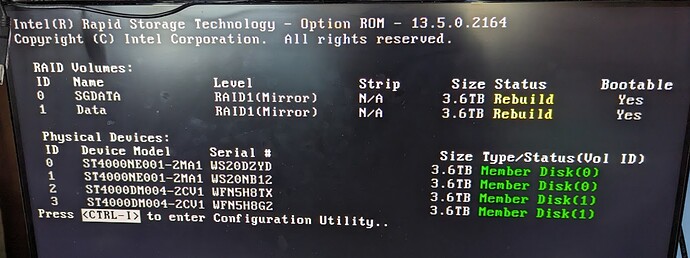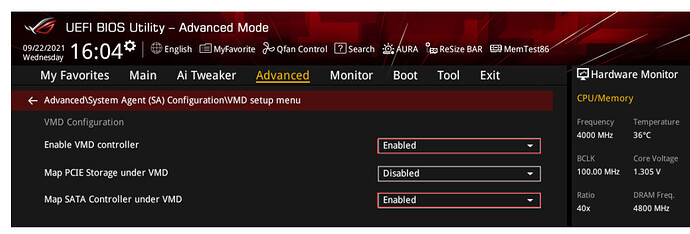I have two RAID1 arrays on a system that is failing after loss of power. They are not system drives, but used for data. While trying to recover the system, I noticed that both arrays have a status of “rebuild” in the bios.
Because two of four HDDs must have failed or were missing, I disconnected all of them while troubleshooting the system. Without the RAID arrays connected, and only the boot/OS(windows 10 pro) m.2 drive, I am still receiving BSOD memory management errors.
Because the system is older and I had planned to upgrade soon, I wonder if I can just add the 4 drives to a current board and have it recognize the arrays, even though they are in “rebuild” status.
The current board is the GA-H97-D3H with the latest bios. The optROM version is 13.5.0.2164
The new board will be Asus Proart Z790.
Any advice on how to do this without losing data is greatly appreciated. IE the best way to safely add them back to the system While flagged as “rebuild”.


